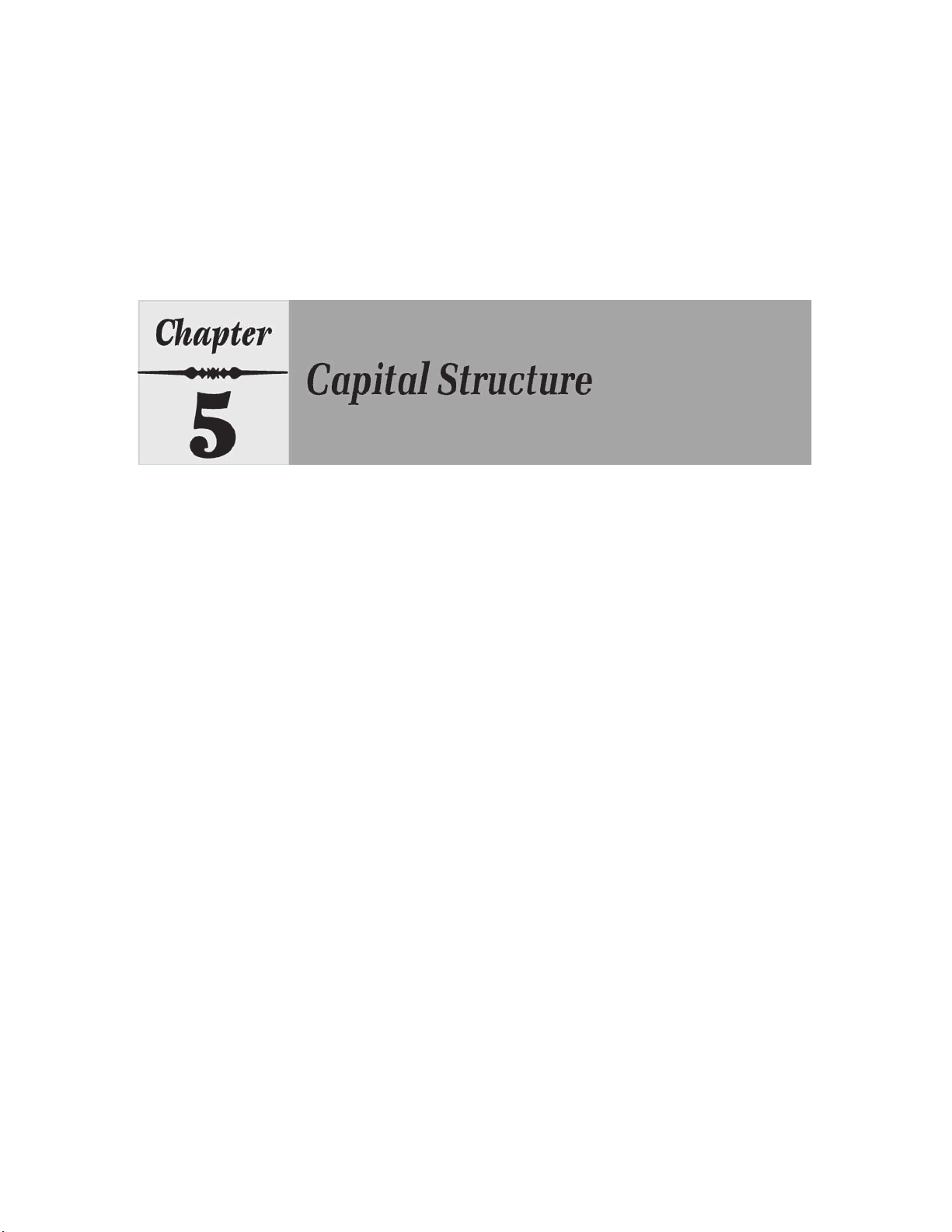
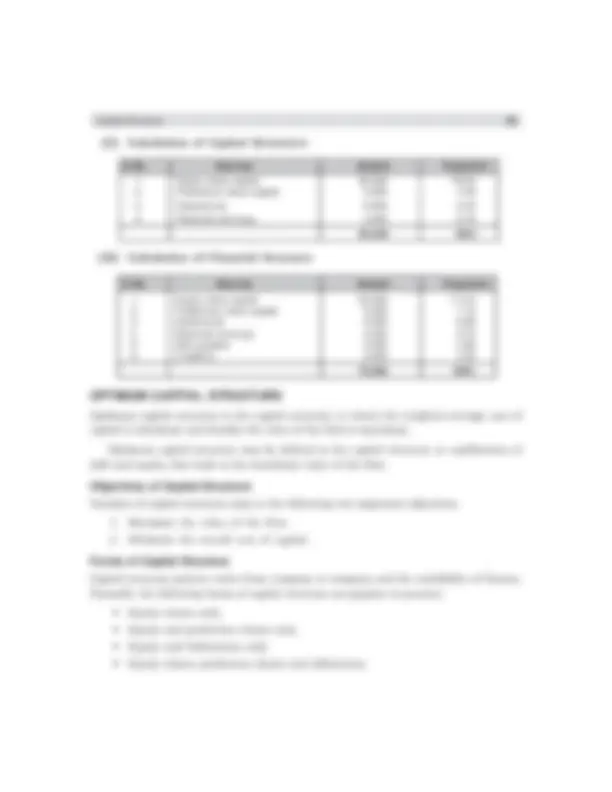
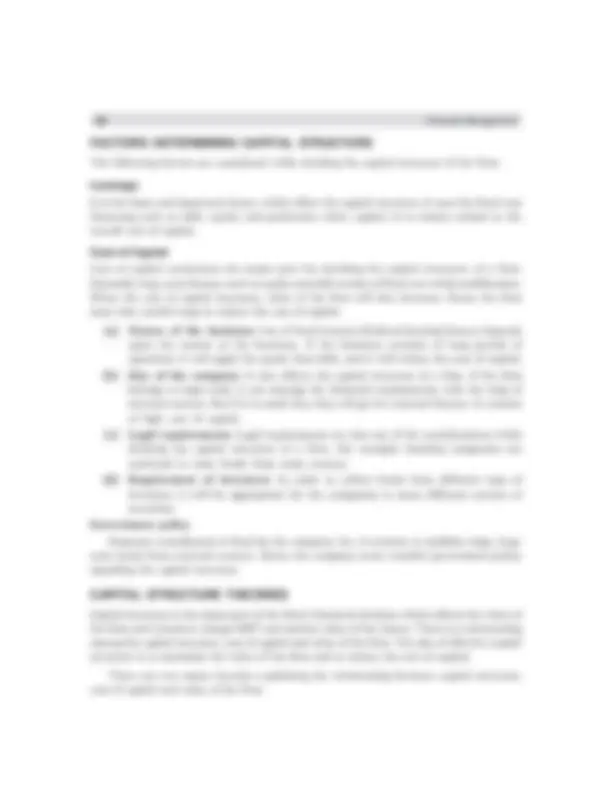
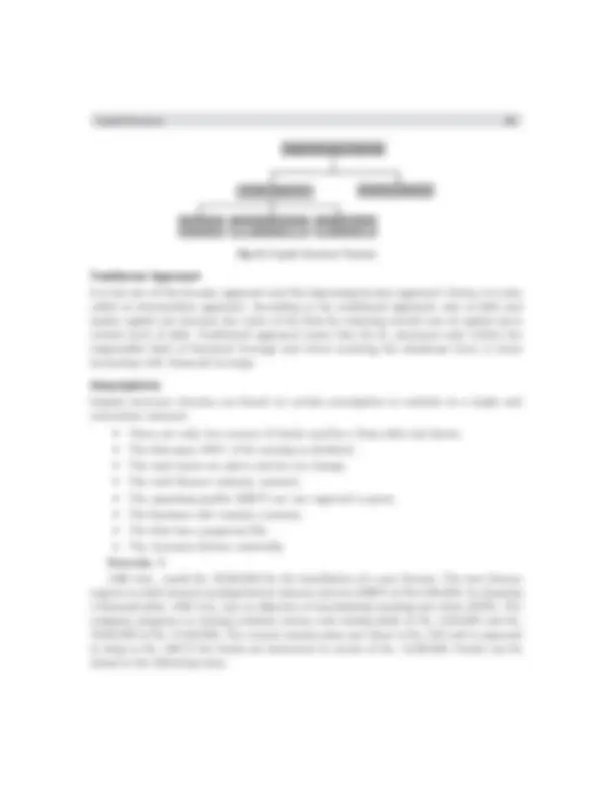
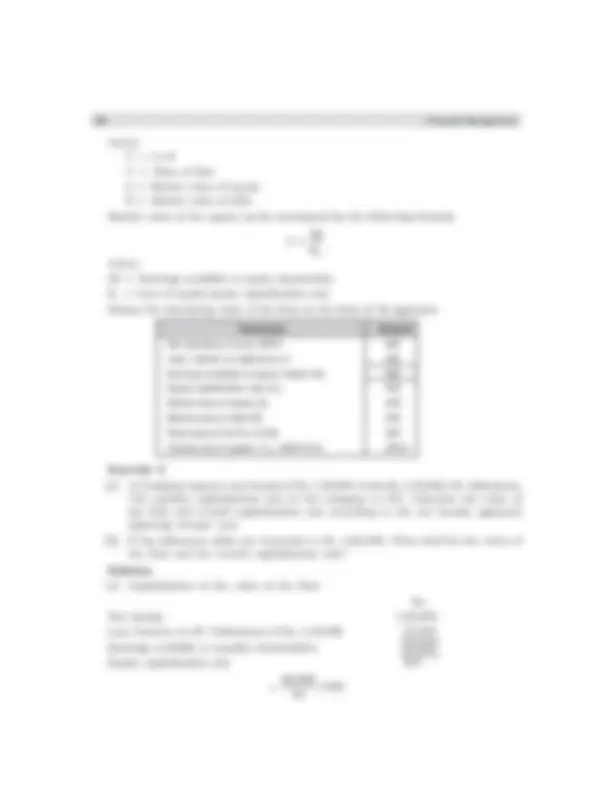
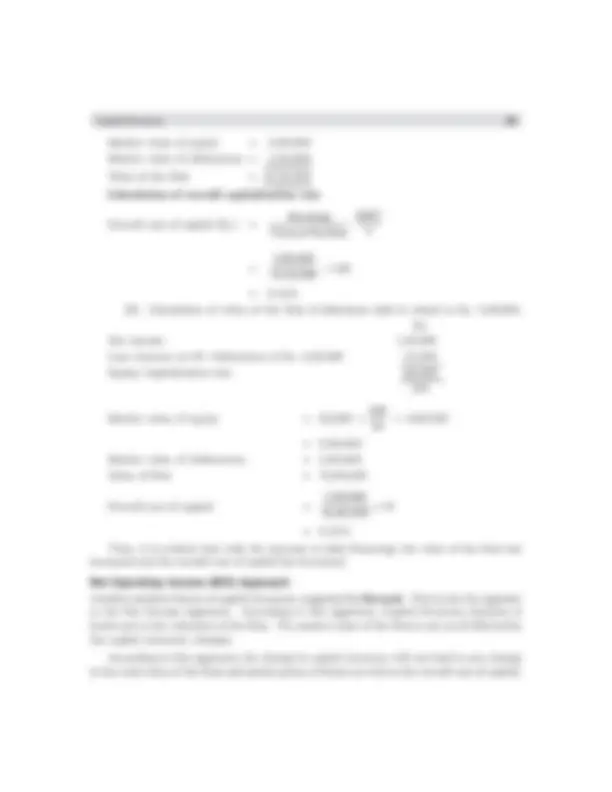
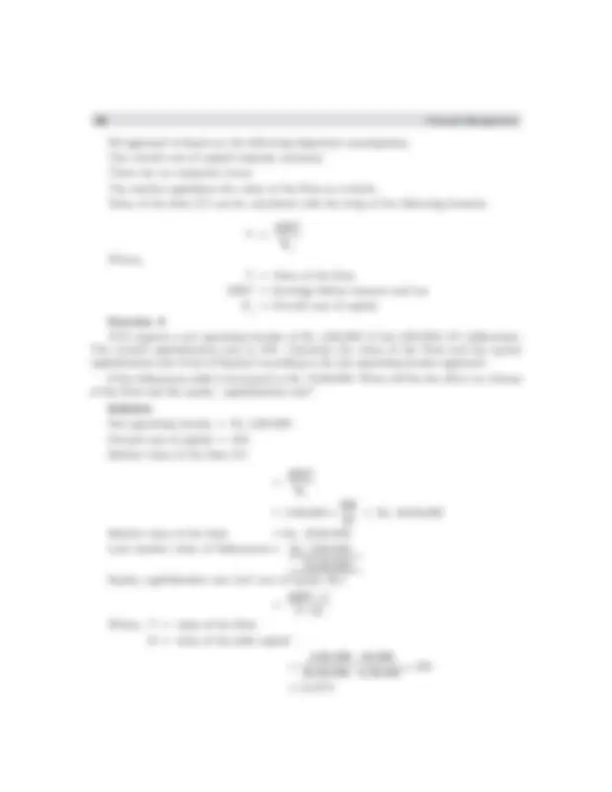
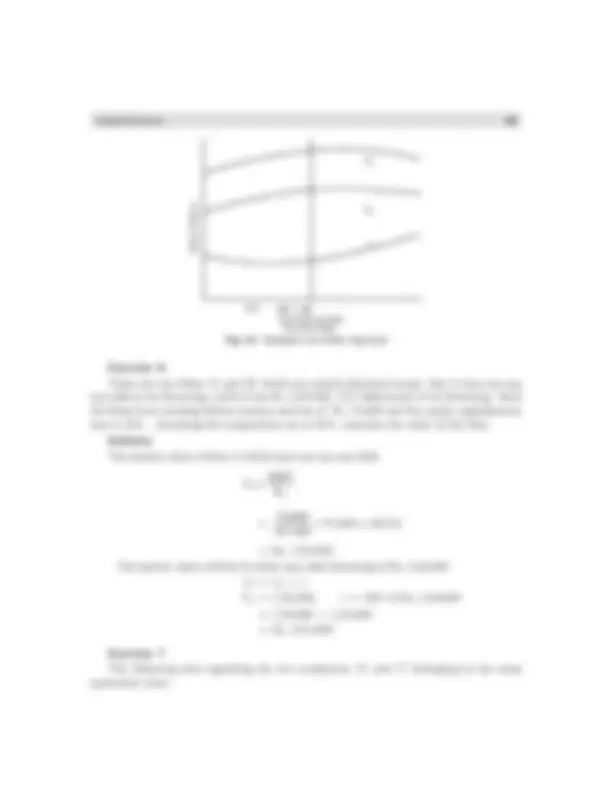
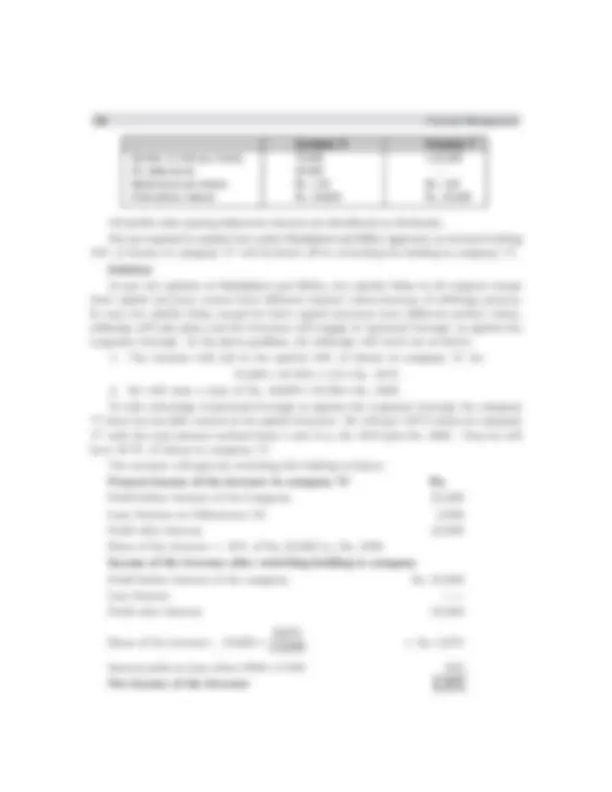
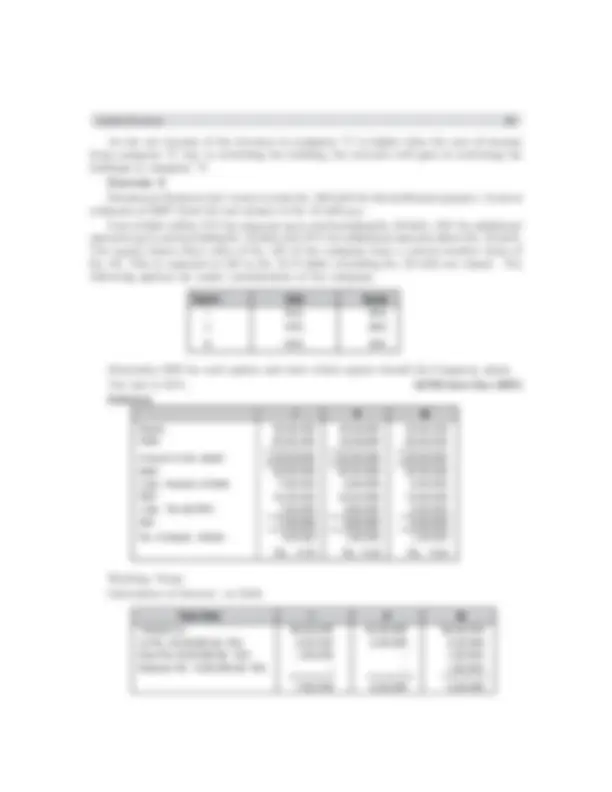
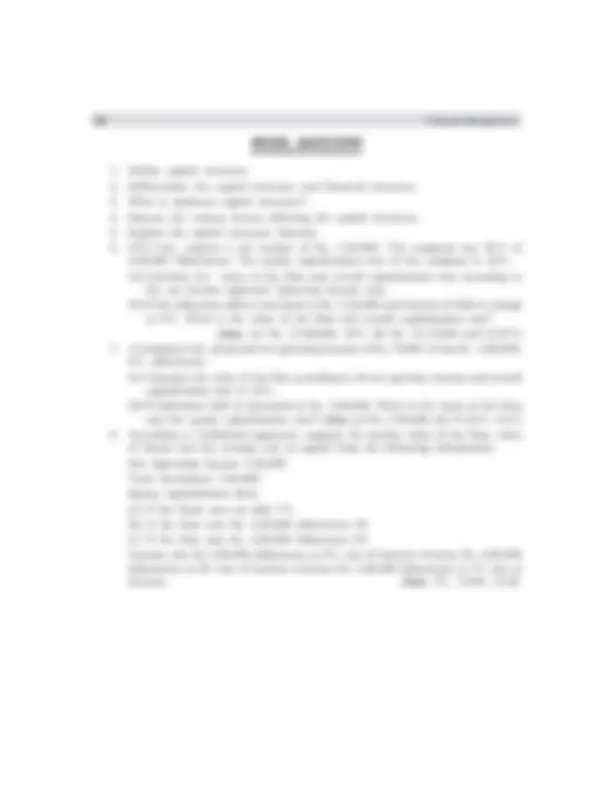


Study with the several resources on Docsity

Earn points by helping other students or get them with a premium plan


Prepare for your exams
Study with the several resources on Docsity

Earn points to download
Earn points by helping other students or get them with a premium plan
Community
Ask the community for help and clear up your study doubts
Discover the best universities in your country according to Docsity users
Free resources
Download our free guides on studying techniques, anxiety management strategies, and thesis advice from Docsity tutors
Capital is the major part of all kinds of business activities, which are decided by the size, and nature of the business concern. Capital may be raised with the help of various sources. If the company maintains proper and adequate level of capital, it will earn high profit and they can provide more dividends to its shareholders.
Typology: Study notes
1 / 18

This page cannot be seen from the preview
Don't miss anything!











Capital is the major part of all kinds of business activities, which are decided by the size, and nature of the business concern. Capital may be raised with the help of various sources. If the company maintains proper and adequate level of capital, it will earn high profit and they can provide more dividends to its shareholders.
Meaning of Capital Structure Capital structure refers to the kinds of securities and the proportionate amounts that make up capitalization. It is the mix of different sources of long-term sources such as equity shares, preference shares, debentures, long-term loans and retained earnings.
The term capital structure refers to the relationship between the various long-term source financing such as equity capital, preference share capital and debt capital. Deciding the suitable capital structure is the important decision of the financial management because it is closely related to the value of the firm. Capital structure is the permanent financing of the company represented primarily by long-term debt and equity.
Definition of Capital Structure The following definitions clearly initiate, the meaning and objective of the capital structures.
According to the definition of Gerestenbeg, “Capital Structure of a company refers to the composition or make up of its capitalization and it includes all long-term capital resources”. According to the definition of James C. Van Horne, “The mix of a firm’s permanent long-term financing represented by debt, preferred stock, and common stock equity”. According to the definition of Presana Chandra, “The composition of a firm’s financing consists of equity, preference, and debt”.
48 Financial Management According to the definition of R.H. Wessel, “The long term sources of fund employed in a business enterprise”.
The term financial structure is different from the capital structure. Financial structure shows the pattern total financing. It measures the extent to which total funds are available to finance the total assets of the business.
Financial Structure = Total liabilities Or Financial Structure = Capital Structure + Current liabilities. The following points indicate the difference between the financial structure and capital structure.
Financial Structures Capital Structures
Example From the following information, calculate the capitalization, capital structure and financial structures.
Balance Sheet Liabilities Assets Equity share capital 50,000 Fixed assets 25, Preference share capital 5,000 Good will 10, Debentures 6,000 Stock 15, Retained earnings 4,000 Bills receivable 5, Bills payable 2,000 Debtors 5, Creditors 3,000 Cash and bank 10, 70,000 70, (i) Calculation of Capitalization S. No. Sources Amount
50 Financial Management
The following factors are considered while deciding the capital structure of the firm.
Leverage It is the basic and important factor, which affect the capital structure. It uses the fixed cost financing such as debt, equity and preference share capital. It is closely related to the overall cost of capital.
Cost of Capital Cost of capital constitutes the major part for deciding the capital structure of a firm. Normally long- term finance such as equity and debt consist of fixed cost while mobilization. When the cost of capital increases, value of the firm will also decrease. Hence the firm must take careful steps to reduce the cost of capital.
(a) Nature of the business: Use of fixed interest/dividend bearing finance depends upon the nature of the business. If the business consists of long period of operation, it will apply for equity than debt, and it will reduce the cost of capital. (b) Size of the company: It also affects the capital structure of a firm. If the firm belongs to large scale, it can manage the financial requirements with the help of internal sources. But if it is small size, they will go for external finance. It consists of high cost of capital. (c) Legal requirements: Legal requirements are also one of the considerations while dividing the capital structure of a firm. For example, banking companies are restricted to raise funds from some sources. (d) Requirement of investors: In order to collect funds from different type of investors, it will be appropriate for the companies to issue different sources of securities. Government policy Promoter contribution is fixed by the company Act. It restricts to mobilize large, long- term funds from external sources. Hence the company must consider government policy regarding the capital structure.
Capital structure is the major part of the firm’s financial decision which affects the value of the firm and it leads to change EBIT and market value of the shares. There is a relationship among the capital structure, cost of capital and value of the firm. The aim of effective capital structure is to maximize the value of the firm and to reduce the cost of capital.
There are two major theories explaining the relationship between capital structure, cost of capital and value of the firm.
Capital Structure 51
C a pita l S truc ture Th eo ries
M od ern A pp roa c h T ra d ition al A p pro a c h
N e t In c om e A p pro a ch
N e t O p era tin g In co m e A p pro a ch
M od ig lian i-M ille r A p pro a ch Fig. 5.1 Capital Structure Theories
Traditional Approach It is the mix of Net Income approach and Net Operating Income approach. Hence, it is also called as intermediate approach. According to the traditional approach, mix of debt and equity capital can increase the value of the firm by reducing overall cost of capital up to certain level of debt. Traditional approach states that the Ko decreases only within the responsible limit of financial leverage and when reaching the minimum level, it starts increasing with financial leverage.
Assumptions Capital structure theories are based on certain assumption to analysis in a single and convenient manner:
Capital Structure 53
Particulars (a) No Debt (b) Rs. 2,50,000 (c) Rs. 4,00, 6% debentures 7% debentures Net operating system 1,00,000 1,00,000 1,00, (–) Interest (i.e.) Cost of debt _ 15,000 28, Earnings available to Equity shareholders 1,00,000 85,000 72, Equity Capitalization Rate 10% 11% 13% Market value of shares ×^ 10,000 10 100 ×^ 85,000 100 11 ×^ 72,000 100 13 Rs. 10,00,000/- Rs.772727/- Rs.553846/- Market Value of firm 10,00,000 10,22,727 9,53, 1,00,000 1,00,000 1,00,
Average cost of capital × 1,00,000 (^100) 10,00,000 ×
1 00 000 (^100) 10 22 727
, , , , ×
1 00 000 (^100) 9 53 846
, , , , Earnings Valueof the firm EBIT V =10%^ =9.78%^ =10.48%
Comments From the above data, if debt of Rs. 2,50,000 is used, the value of the firm increases and the overall cost of capital decreases. But, if more debt is used to finance in place of equity i.e., Rs. 4,00,000 debentures, the value of the firm decreases and the overall cost of capital increases.
Net Income (NI) Approach Net income approach suggested by the Durand. According to this approach, the capital structure decision is relevant to the valuation of the firm. In other words, a change in the capital structure leads to a corresponding change in the overall cost of capital as well as the total value of the firm.
According to this approach, use more debt finance to reduce the overall cost of capital and increase the value of firm. Net income approach is based on the following three important assumptions:
54 Financial Management
where V = S+B V = Value of firm S = Market value of equity B = Market value of debt Market value of the equity can be ascertained by the following formula:
S = e
where NI = Earnings available to equity shareholder Ke = Cost of equity/equity capitalization rate Format for calculating value of the firm on the basis of NI approach. Particulars Amount Net operating income (EBIT) XXX Less: interest on debenture (i) XXX Earnings available to equity holder (NI) XXX Equity capitalization rate (Ke ) XXX Market value of equity (S) XXX Market value of debt (B) XXX Total value of the firm (S+B) XXX Overall cost of capital = Ko = EBIT/V(%) XXX% Exercise 3 (a) A Company expects a net income of Rs. 1,00,000. It has Rs. 2,50,000, 8% debentures. The equality capitalization rate of the company is 10%. Calculate the value of the firm and overall capitalization rate according to the net income approach (ignoring income tax). (b) If the debenture debts are increased to Rs. 4,00,000. What shall be the value of the firm and the overall capitalization rate? Solution (a) Capitalization of the value of the firm Rs. Net income 1,00, Less: Interest on 8% Debentures of Rs. 2,50,000 20, Earnings available to equality shareholders 80, Equity capitalization rate 10%
= ×
56 Financial Management NI approach is based on the following important assumptions; The overall cost of capital remains constant; There are no corporate taxes; The market capitalizes the value of the firm as a whole; Value of the firm (V) can be calculated with the help of the following formula
V = o
Where, V = Value of the firm EBIT = Earnings before interest and tax K (^) o = Overall cost of capital Exercise 4 XYZ expects a net operating income of Rs. 2,00,000. It has 8,00,000, 6% debentures. The overall capitalization rate is 10%. Calculate the value of the firm and the equity capitalization rate (Cost of Equity) according to the net operating income approach. If the debentures debt is increased to Rs. 10,00,000. What will be the effect on volume of the firm and the equity capitalization rate? Solution Net operating income = Rs. 2,00, Overall cost of capital = 10% Market value of the firm (V)
= o
= Rs. 20,00, Market value of the firm = Rs. 20,00, Less: market value of Debentures= Rs. 8,00, 12,00, Equity capitalization rate (or) cost of equity (Ke)
=
Where, V = value of the firm D = value of the debt capital
= (^) −
Capital Structure 57 If the debentures debt is increased to Rs. 10,00,000, the value of the firm shall remain changed to Rs. 20,00,000. The equity capitalization rate will increase as follows:
=
Exercise 5 Abinaya company Ltd. expresses a net operating income of Rs. 2,00,000. It has Rs. 8,00,000 to 7% debentures. The overall capitalization rate is 10%. (a) Calculate the value of the firm and the equity captialization rate (or) cost of equity according to the net operating income approach. (b) If the debenture debt is increasesd to Rs. 12,00,000. What will be the effect on the value of the firm, the equity capitalization rate? Solution (a) Net operating income = Rs. 2,00, Over all cost of capital = 10% Market value of the firm (V) NOI(EBIT) Overall cost of capital(OK) = 2,00,000×100/ = Rs. 20,00, Market value of firm = Rs. 20,00, Less Market value of debentures = Rs. 8,00, Total marketing value of equity = Rs. 12,00, Equity capitalization rate (or) cost of equity (Ke )
=
Capital Structure 59
K (^) e
K (^) o
k
D /E R is k D u e D eb t
R is k B e aring D e bt
R ate o f R etu rn
Fig. 5.2 Modigliani and Miller Approach
Exercise 6 There are two firms ‘A’ and ‘B’ which are exactly identical except that A does not use any debt in its financing, while B has Rs. 2,50,000 , 6% Debentures in its financing. Both the firms have earnings before interest and tax of Rs. 75,000 and the equity capitalization rate is 10%. Assuming the corporation tax is 50%, calculate the value of the firm. Solution The market value of firm A which does not use any debt.
Vu = o
= Rs. 7,50, The market value of firm B which uses debt financing of Rs. 2,50, V (^) t = V (^) u + t Vu = 7,50,000, t = 50% of Rs. 2,50, = 7,50,000 + 1,25, = Rs. 8,75, Exercise 7 The following data regarding the two companies ‘X’ and ‘Y’ belonging to the same equivalent class:
60 Financial Management Company ‘X’ Company ‘Y’ Number of ordinary shares 75,000 1,25, 5% debentures 40,000 – Market price per shares Rs. 1.25 Rs. 1. Profit before interest Rs. 25,000 Rs. 25,
All profits after paying debenture interest are distributed as dividends. You are required to explain how under Modigliani and Miller approach, an investor holding 10% of shares in company ‘X’ will be better off in switching his holding to company ‘Y’. Solution As per the opinion of Modigliani and Miller, two similar firms in all respects except their capital structure cannot have different market values because of arbitrage process. In case two similar firms except for their capital structure have different market values, arbitrage will take place and the investors will engage in ‘personal leverage’ as against the corporate leverage. In the given problem, the arbitrage will work out as below.
Share of the investor : 25,000×
1,25,000 = Rs. 2, Interest paid on loan taken 4000×5/100 200 Net Income of the Investor 2,
62 Financial Management Exercise 9 The following is the data regarding two Company’s. X and Y belonging to the same risk class.
X Y No. of ordinary shares 90,000 1,50, Market price/share (Rs.) 1.2 1. 6% debentures 60,000 – Profit before interest 18,000 18,
All profits after interest are distributed as dividend. Explain how under Modigliani & Miller Approach an investor holding 10% of shares in Company X will be better off in switching his holding to Company Y. (CA Final Nov. 1993) Solution Both the firms have EBIT of Rs. 18,000. Company X has to pay interest of Rs. 3600 (i.e., 6% on Rs. 60,000) and the remaining profit of Rs. 14,400 is being distributed among the shareholders. The Company Y on the other hand has no interest liability and therefore is distributing Rs.18,000 among the shareholders. The investor will be well off under MM Model by selling the shares of X and shifting to shares of Y company through the arbitrage process as follows. If he sells shares of X Company He gets Rs. 10,800 (9,000 shares @ Rs.1.2 per share). He now takes a 6% loan of Rs.6, ( i.e. 105 of Rs. 60,000) and out of the total cash of Rs. 16,800 he purchases 10% of shares of Company Y for Rs. 15,000; his position with regard to Company Y would be as follows:
X Y Dividends (10% of Profits) 1,440 1, Less:Interest (6% on Rs. 6,000) – 360 Net Income 1,440 1,
Thus by shifting from Company Y the investor is able to get the same income of Rs. 1,440 and still having funds of Rs. 1,800 (i.e., Rs. 16,800 – 15,000) at his disposal. He is better off not in terms of income but in terms of having capital of Rs. 1,800 with him which he can invest elsewhere. Exercise 10 Gentry Motors Ltd., a producer of turbine generators, is in this situation; EBIT = Rs. 40 lac. rate =35%, dept. outstanding = D = Rs. 20 lac., rate of Interest =10%, Ke = 15%, shares of stock outstanding = No. = Rs. 6,00,000 and book value per share = Rs. 10. Since Gentry’s product market is stable and the Company expects no growth, all earnings are paid out as dividends. The debt consists of perpetual bonds. What are the Gentry’s EBS and its price per share, P (^) o? (CS Final Dec. 1998)
Capital Structure 63 Solution (a) EBIT 40,00,
interest @ 10%
Tax @ 35%
No. of shares 6,00, EPS (or Dividend) Rs. 4. Ke (given) 15% Po ( i.e. , D/Ke ) 4.12/. ⇒ Rs. 27. In the same question if the Company increases its debt by Rs. 80 lakh to a total of Rs. 1 crore using the new debt to buy and retire of its shares at current price, its interest rate on debt will be 12% and its cost of equity will rise from 15% to 17%. EBIT will remain constant, should this Company change its capital structure. If Company decides to increase its debt by Rs. 80 lacs, the Company may buy back 80,00,000 (^) ÷ 27.47 = 2,91,226 shares. Thereafter the remaining no. of shares would be 3,08,774 ( i.e. , 6,00,000 – 2,91,226). The market price of the share may be ascertained as follows: EBIT 40,00, Interest @ 12% on Rs. 1 crore 12,00, 28,00, Tax @ 35% 9,80, 18,20, No. of equity shares 3,08, EPS Rs. 5. Ke 17% Po ( i.e. , D/Ke ) 5. . = Rs. 34. As the price is expected to rise from 27.47 to Rs 34.64, the Company may change its capital structure by raising debt and retaining some number of shares.